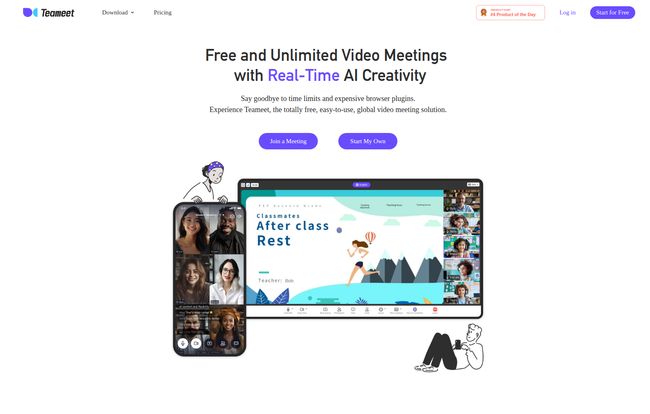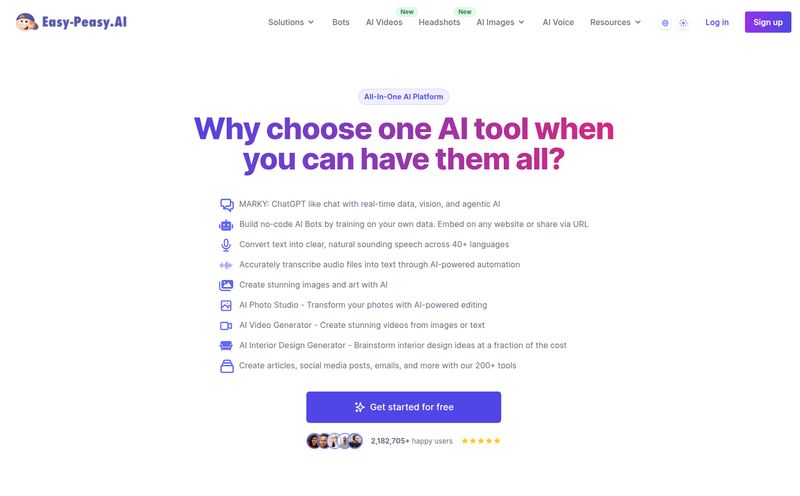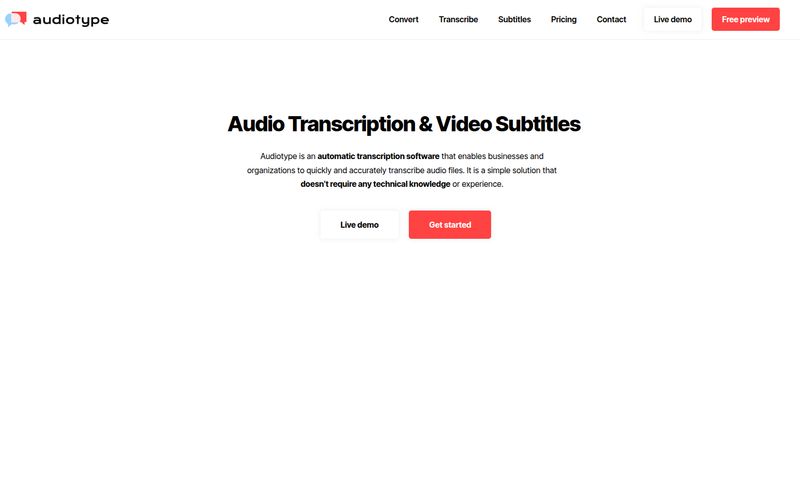We've all been living in a world of video calls for years now. And if there’s one thing we’ve all experienced, it's that dreaded pop-up: “Your meeting will end in 10 minutes.” Ugh. It’s the digital equivalent of someone flickering the lights at a party to get you to leave. We've paid our dues, both figuratively and literally, to the big players in the video conferencing game. So when a new tool pops up on my radar promising “Free and Unlimited Video Meetings,” my inner SEO-and-startup-nerd sits up and pays attention. But my inner skeptic also raises an eyebrow.
The tool in question is Teameet. I’d seen it mentioned in a few dev circles and noticed it was 'Product of the Day' on Product Hunt, which is usually a good sign. The promise is huge: all the core features you need, an ad-free experience, and some genuinely cool AI tricks up its sleeve, all without a time limit on the free plan. So, I did what any self-respecting digital marketer would do—I cleared my afternoon and took it for a spin.

Visit Teameet
So, What Exactly is Teameet?
At its core, Teameet is a video conferencing platform. You know the drill: video calls, screen sharing, chat, the works. It’s designed to work across your phone, tablet, or just straight from your web browser, which I appreciate. No one likes forcing a colleague to download yet another app just for a quick chat.
But calling it just another meeting app feels like a disservice. Where it tries to stand out is in its generosity and its clever use of AI. It’s aiming squarely at the folks who are tired of the limitations of free tiers on other platforms. Think cost-conscious startups, freelancers who need to look professional without a hefty monthly bill, or even families who just want to chat without being cut off.
The Features That Genuinely Caught My Eye
Okay, let's get into the nitty-gritty. A platform can have all the fancy marketing it wants, but if the features don’t deliver, it’s just noise. I was pleasantly surprised here.
First Off, Let's Talk 'Free and Unlimited'
This is the big one. Teameet’s free plan offers unlimited meeting duration for up to 25 participants. Let that sink in. No 40-minute cutoff. No awkward “Hey guys, I’m going to have to send a new link” dance. For small teams, remote workers, or client check-ins, this is a massive win. You get all the standard stuff too – HD video, screen sharing, and robust controls for the host. It feels less like a stripped-down freebie and more like a genuinely usable product.
The AI Magic: More Than Just a Buzzword
Here’s where Teameet gets really interesting. They're baking AI directly into the experience, and not in a gimmicky way. The standout feature is the real-time, AI-powered translation with live captions in over 20 languages. I tested this with a colleague overseas, and while it wasn't absolutely perfect (what machine translation is?), it was impressively accurate. It’s like having a universal translator from Star Trek built right in. For global teams or anyone working with international clients, this could single-handedly make it worth the switch.
Beyond translation, the AI also handles live transcription and meeting summaries. Imagine finishing a long brainstorming session and getting a neat, transcribed document of the entire call. That's some serious time-saving potential right there.
A Quick Look at Teameet's Pricing
You’re probably thinking, “Okay, what’s the catch?” There’s always a catch, right? Well, it's less of a catch and more of a very reasonable upsell. Teameet has two simple tiers:
| Plan | Price | Key Features |
|---|---|---|
| Basic | Free | Unlimited meeting duration, 25 participants, audio recording, 1GB cloud storage, live captions. |
| Pro | $4.16 / month | Everything in Basic, plus video recording and a whopping 100GB of cloud storage. |
Honestly, that’s it. The main reason to upgrade to Pro is for video recording and the massive bump in cloud storage. If you need to record client sessions, create tutorials, or just keep a video archive of your meetings, the Pro plan is an absolute no-brainer for the price of a latte.
The Good, The Not-So-Bad, and The AI-Powered
No tool is perfect. After poking around, here’s my honest breakdown.
The advantages are pretty clear. The generous free plan is the star of the show. The AI translation and transcription are legitimately useful and not just marketing fluff. The interface is clean, intuitive, and, blessedly, ad-free even on the free plan. That’s a small detail, but it speaks volumes about their user-first approach.
On the flip side, the limitations are what you might expect. The 1GB of cloud storage on the free plan is fine for audio recordings and transcripts, but it’ll fill up if you’re a heavy user. The main 'con' is that some features, like the virtual backgrounds, feel a little less polished than what you’d find on a mature platform like Zoom. They work, but you can tell they're still being refined. It's a small gripe, and one I expect will improve over time.
So, Who Is This Really For?
I think Teameet has found a really sweet spot. It’s perfect for:
- Startups and Small Businesses: Teams that need a reliable, professional meeting tool without adding another hefty subscription to their burn rate.
- Freelancers and Consultants: The unlimited meeting time and AI transcription are a dream for client work.
- Global Teams: The real-time translation is a killer feature that breaks down communication barriers.
- Students and Educators: Great for group projects, online study sessions, and tutoring without time limits.
Is it going to replace enterprise-level solutions for a 500-person corporation? Probably not today. But for the massive segment of the market below that, it's an incredibly compelling option.
Final Thoughts: Is Teameet Worth a Shot?
Yes. Absolutely. In a market crowded with expensive and restrictive tools, Teameet feels like a breath of fresh air. It’s not just a cheaper alternative; it's a thoughtfully designed platform that leverages new tech to solve old problems.
It nails the fundamentals and adds a layer of AI-powered innovation that actually feels useful. Will it kill Zoom? The David and Goliath narrative is always fun, but that's not the point. Teameet doesn't have to kill Zoom to be wildly successful. It just has to offer a better, more accessible solution for the millions of users who don't need—or want to pay for—every single enterprise feature under the sun. And in my book, it does that beautifully.
Frequently Asked Questions about Teameet
1. Is Teameet really free to use?
Yes, the Basic plan is completely free. It includes unlimited meeting duration for up to 25 people, audio recording, and 1GB of storage. There are no hidden fees or mandatory ads.
2. How many people can join a single Teameet meeting?
Both the Free and Pro plans support up to 25 participants per meeting, which is ideal for most small to medium-sized teams, classes, or family gatherings.
3. What’s the biggest limitation of the free plan?
The main limitations are the 1GB cloud storage cap and the lack of video recording. If you need to record videos of your meetings or store a lot of audio recordings, the Pro plan is a very affordable upgrade.
4. How good is the AI-powered real-time translation?
It's surprisingly effective for a free tool! While not 100% flawless (no AI is), it's more than capable of facilitating communication between people who speak different languages, especially for clarifying key points with live captions.
5. Do I need to download an app to use Teameet?
Nope. While they have dedicated mobile and tablet apps, you and your guests can join meetings directly from a web browser, making it super accessible for one-off calls.



